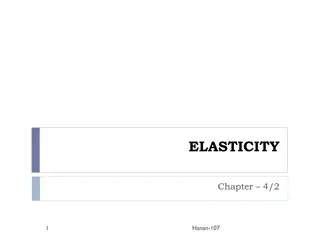Understanding the Kinked Demand Curve Hypothesis in Oligopoly Markets
In oligopoly markets, prices often remain rigid despite cost changes. The kinked demand curve hypothesis, introduced by economist Sweezy, explains this phenomenon. It suggests that the demand curve an oligopolist faces has a kink at the current price level, with elastic demand above and inelastic demand below. This kink influences pricing decisions and contributes to price stability in oligopoly settings.
Uploaded on Dec 11, 2024 | 0 Views
Download Presentation

Please find below an Image/Link to download the presentation.
The content on the website is provided AS IS for your information and personal use only. It may not be sold, licensed, or shared on other websites without obtaining consent from the author. Download presentation by click this link. If you encounter any issues during the download, it is possible that the publisher has removed the file from their server.
E N D
Presentation Transcript
In many oligopolist markets, it has been observed that prices tend to remain inflexible for a very long time. Even in the face of declining costs, they tend to change infrequently. American economist Sweezy came up with the kinked demand curve hypothesis to explain the reason behind this price rigidity under oligopoly. According to the kinked demand curve hypothesis, the demand curve facing an oligopolist has a kink at the level of the prevailing price. This kink exists because of two reasons: The segment above the prevailing price level is highly elastic. The segment below the prevailing price level is inelastic. The following figure shows a kinked demand curve dD with a kink at point P. 1. 2.
From the figure, we know that The prevailing price level = P The firm produces and sells output = OM Also, the upper segment (dP) of the demand curve (dD) is elastic. The lower segment (PD) of the demand curve (dD) is relatively inelastic. This difference in elasticities is due to an assumption of the kinked demand curve hypothesis.























